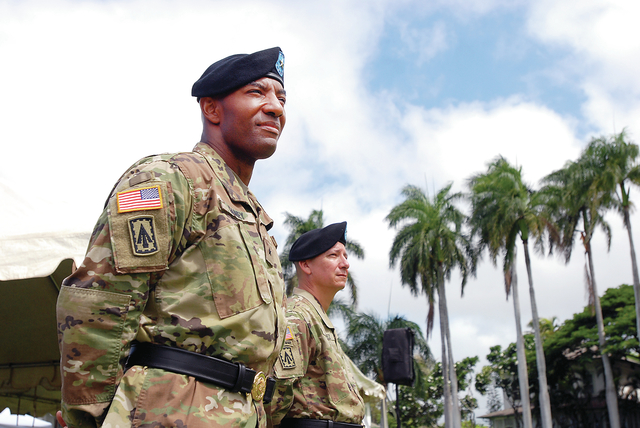FORT SHAFTER, Oahu — The U.S. Army’s new missile defense commander for the Asia-Pacific region said Friday his priorities are readiness, being able to respond to contingencies and working with partner countries in the region. ADVERTISING FORT SHAFTER, Oahu —
FORT SHAFTER, Oahu — The U.S. Army’s new missile defense commander for the Asia-Pacific region said Friday his priorities are readiness, being able to respond to contingencies and working with partner countries in the region.
The region is so large it’s important to leverage partnerships with other nations, Brig. Gen. Sean Gainey said.
Gainey assumed control of the 94th Army Air and Missile Defense Command during a ceremony at Fort Shafter in Honolulu on Friday.
The command oversees missile defense radars and Patriot batteries in Japan and the Terminal High Altitude Area Defense, or THAAD, system in Guam. THAAD is a land-based system that includes a truck-mounted launcher, tracking radar, interceptor missiles and an integrated fire control system. Gainey said his new command helps these various units work together.
“It all links in to an integrated network where sensors can pick up threat activity and pass that information within our command and we can make sure the right user has it,” Gainey said in an interview.
The military has deployed THAAD to Guam since 2013 to counter the threat of North Korean missiles.
Earlier this year, the U.S. and South Korea announced plans to deploy a THAAD system in South Korea.
Seoul and Washington began their formal discussions on the THAAD deployment after North Korea conducted a fourth nuclear test.
North Korea called the planned THAAD deployment a provocation that it says is only aimed at bolstering U.S. military hegemony in the region.




